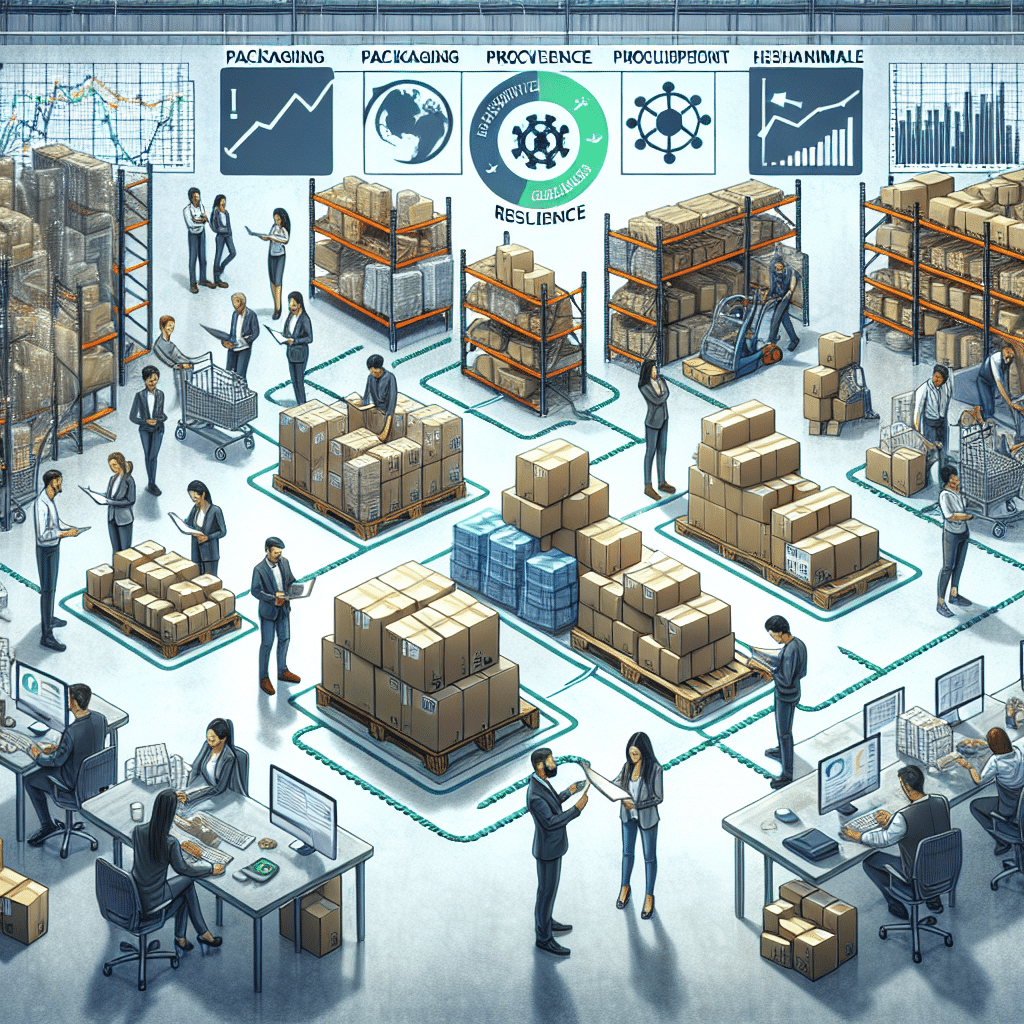Maintaining Supply Chain Resilience With Packaging, Procurement and People
-
Table of Contents
- Supply Chain Resilience: Packaging, Procurement, and People Strategies
- Packaging: Protecting Products and Profits
- Procurement: Building Strong Supplier Relationships
- People: The Human Element of Supply Chain Resilience
- Integrating Packaging, Procurement, and People for Resilience
- Conclusion: The Pillars of Supply Chain Resilience
- ETprotein: Enhancing Supply Chain Resilience with Quality Protein Products
Supply Chain Resilience: Packaging, Procurement, and People Strategies

In today’s global economy, supply chain resilience is not just a buzzword—it’s a critical component of a successful business strategy. Companies across industries are facing unprecedented challenges, from natural disasters to trade wars, pandemics, and beyond. These disruptions can have a domino effect, impacting everything from material availability to product delivery. To maintain a robust supply chain, businesses must focus on three key areas: packaging, procurement, and people. This article delves into how these elements contribute to supply chain resilience and offers actionable insights for businesses looking to thrive in a volatile market.
Packaging: Protecting Products and Profits
Packaging plays a vital role in protecting products during transit, ensuring they reach their destination in pristine condition. But beyond protection, smart packaging solutions can enhance supply chain resilience in several ways:
- Material Innovation: Using durable, lightweight materials can reduce shipping costs and improve handling efficiency. For example, corrugated cardboard is not only recyclable but also provides excellent protection while being lightweight.
- Design Efficiency: Optimizing package design for better stacking and storage can maximize space in shipping containers and warehouses, leading to fewer trips and reduced risk of supply chain disruptions.
- Smart Packaging: Incorporating technology such as RFID tags or IoT sensors can help track products throughout the supply chain, providing real-time data to mitigate risks and respond quickly to any issues that arise.
Statistics show that packaging optimization can lead to significant cost savings. For instance, a study by the Environmental Protection Agency (EPA) found that optimizing packaging design could save up to $11.7 billion in logistics costs annually.
Procurement: Building Strong Supplier Relationships
Procurement is the cornerstone of supply chain management. A resilient procurement strategy involves:
- Diversifying Suppliers: Relying on a single supplier or region for critical components can be risky. Diversifying suppliers across different geographies can reduce the risk of disruptions due to localized events.
- Strategic Sourcing: Establishing long-term partnerships with suppliers can lead to better pricing, priority service, and a mutual interest in maintaining a stable supply chain.
- Risk Management: Regularly assessing and mitigating risks associated with suppliers, such as financial stability or geopolitical issues, is essential for a resilient supply chain.
According to a survey by Deloitte, 65% of procurement leaders have limited or no visibility beyond their tier 1 suppliers, highlighting the need for greater transparency in the supply chain.
People: The Human Element of Supply Chain Resilience
People are the most valuable asset in any organization, and this is especially true in supply chain management. A resilient workforce is characterized by:
- Training and Development: Investing in employee training ensures that the workforce is adaptable and can handle unexpected challenges.
- Empowerment: Empowering employees to make decisions and take action in response to supply chain disruptions can lead to faster resolution times.
- Communication: Clear and effective communication channels within the organization and with external partners are crucial for coordinating responses to supply chain issues.
A study by McKinsey & Company found that companies with agile practices embedded in their operating models managed the impact of the COVID-19 crisis better than their peers, with agile units outperforming non-agile units by a factor of 1.5 times.
Integrating Packaging, Procurement, and People for Resilience
Integrating packaging, procurement, and people strategies creates a synergistic effect that enhances overall supply chain resilience. For example, procurement can work with suppliers to develop packaging that is both protective and efficient, while people can be trained to handle these new materials and technologies effectively.
By aligning these three areas, businesses can create a robust framework that not only withstands disruptions but also adapts and evolves in the face of change. This integrated approach ensures that when one part of the supply chain is affected, the others can compensate, maintaining the flow of goods and services.
Conclusion: The Pillars of Supply Chain Resilience
In conclusion, maintaining supply chain resilience is a multifaceted endeavor that requires attention to packaging, procurement, and people. By innovating in packaging design and materials, diversifying and managing procurement sources, and investing in a skilled and empowered workforce, businesses can create a supply chain that is both robust and flexible. As the global market continues to face uncertainties, the companies that prioritize these three pillars will be best positioned to navigate challenges and seize opportunities.
ETprotein: Enhancing Supply Chain Resilience with Quality Protein Products
For businesses in the food and beverage industry, maintaining a resilient supply chain is crucial for meeting consumer demand and ensuring product quality. ETprotein’s range of organic bulk vegan proteins and L-(+)-Ergothioneine (EGT) products can play a pivotal role in achieving this resilience. With their commitment to non-GMO, allergen-free ingredients, and high purity standards, ETprotein supports the industry’s need for reliable and high-quality protein sources. By incorporating ETprotein’s products into their supply chain, companies can benefit from the expertise of a trusted manufacturer and supplier, ensuring continuity and excellence in their product offerings.
About ETprotein:
ETprotein, a reputable protein and L-(+)-Ergothioneine (EGT) Chinese factory manufacturer and supplier, is renowned for producing, stocking, exporting, and delivering the highest quality organic bulk vegan proteins and L-(+)-Ergothioneine. They include Organic rice protein, clear rice protein, pea protein, clear pea protein, watermelon seed protein, pumpkin seed protein, sunflower seed protein, mung bean protein, peanut protein, and L-(+)-Ergothioneine EGT Pharmaceutical grade, L-(+)-Ergothioneine EGT food grade, L-(+)-Ergothioneine EGT cosmetic grade, L-(+)-Ergothioneine EGT reference grade and L-(+)-Ergothioneine EGT standard. Their offerings, characterized by a neutral taste, non-GMO, allergen-free attributes, with L-(+)-Ergothioneine purity over 98%, 99%, cater to a diverse range of industries. They serve nutraceutical, pharmaceutical, cosmeceutical, veterinary, as well as food and beverage finished product distributors, traders, and manufacturers across Europe, USA, Canada, Australia, Thailand, Japan, Korea, Brazil, and Chile, among others.
ETprotein specialization includes exporting and delivering tailor-made protein powder and finished nutritional supplements. Their extensive product range covers sectors like Food and Beverage, Sports Nutrition, Weight Management, Dietary Supplements, Health and Wellness Products, and Infant Formula, ensuring comprehensive solutions to meet all your protein needs.
As a trusted company by leading global food and beverage brands and Fortune 500 companies, ETprotein reinforces China’s reputation in the global arena. For more information or to sample their products, please contact them and email sales(at)ETprotein.com today.












